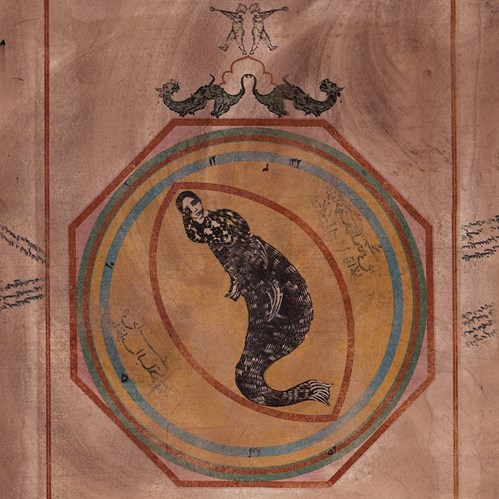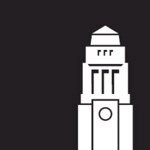1 May - 20 Jul, 2024

Statement:
A major exhibition by Leeds-based Iranian artist Mohammad Barrangi, ‘One Night, One Dream, Life in the Lighthouse’ runs at The Stanley & Audrey Burton Gallery, University of Leeds from 1 May – 20 July 2024.
Inspired by his residency in the University’s Special Collections, this new body of work draws on sources including Iranian calligraphy, Middle Eastern textiles and manuscripts and European scientific illustrations.///
The exhibition explores notions of migration, with a lighthouse motif at its centre reflecting the work of John Smeaton, the UK’s first civil engineer, who was born and died in Leeds.
The Smeaton300 programme by Foxglove celebrates his tricentenary with this and further events and commissions across the city during 2024.
Born without the use of his left arm, Barrangi has refined a unique method of covering paper, walls, sculptures and other objects with exquisitely coloured and textured layers of illustration, text and decoration.
Beginning with traditional drawing and calligraphy before introducing digital manipulation, he moves to working on the floor with his feet, using a solvent to transfer completed images onto a variety of surfaces which have been prepared with Iranian wood stain and other pigments.
The paper is rubbed away to leave the print behind, then a final coat of varnish unifies the composition and enhances his distinctive palette. Recently he has incorporated 3D printing into his practice, and in his forthcoming exhibition he will use sound as an element in his installations for the first time.
Articulating his personal experiences of migration and disability, Barrangi’s work invites viewers into his interior world and encourages them to piece together its wealth of fragments for themselves.
Memories mingle with biblical narratives, Persian mythology and European literature in his rich imaginary universe. Female characters inspired by empowered women from history – and his own friends and family – are a recurring element, as are figures with missing limbs or hands.
The exhibition introduces the character of Lily, “a girl with her head full of dreams and stories”, Barrangi explains. “Born in Anzali, an Iranian port on the Caspian Sea, she travels to a seaside town in the south of England in a small wooden boat, dressed in a talismanic shirt sewn by her mother to ward off adversity.
“It is a stormy night, and she finds shelter in a lighthouse that reminds her of the Manareh tower that overlooks the harbour in Anzali. On reaching the top of the building, she feels as if she is in a new world. Falling asleep with fatigue and cold, she hears a traditional song that her mother used to sing to her.”
The song, ‘Dərya tūfān dare’ (The sea is stormy) originates in Gilan, the region of northern Iran which encompasses Anzali as well as the artist’s nearby hometown of Rasht. Heard in the gallery, it ushers the visitor into Lily’s all-enveloping dream world of fantastic animals, childhood stories and legends.
In the centre of the space, made specifically for the exhibition, is a large structure based on a minbar, a pulpit for delivering sermons in mosques. Completely adorned with Barrangi’s designs, the door at its entrance “seems to lead to another world”, and its dome recalls the top of a lighthouse.
It is accompanied by a sculpture of a ‘unicorn-zebra’, its stripes formed by outsized strokes from a traditional reed pen.
Elsewhere, works incorporate forms discovered by the artist in the University’s Special Collections, ranging from Chinese and Turkish textiles and Arabic manuscripts to early navigational devices and a book on the paintings of Hieronymus Bosch.
Based on 16 th -century Islamic battledress, Lily’s talismanic shirt is the subject of an astonishing series of shaped prints. Barrangi’s versions of the ritualis garments are animated by calligraphy, foliage and human and animal forms inspired by ‘Haft Peykar’ (Seven Portraits), the 12 th -century epic by the Persian poet Nizami Ganjavi.
The exhibition is part of the Leeds-wide Smeaton300 programme, commemorating the 300 the anniversary of John Smeaton, who was born in Leeds in 1724.
Among his many achievements, Smeaton is particularly famous for designing the revolutionary Eddystone Lighthouse. Inspired by the shape of an oak tree, its broad base and tapering tower enabled it to withstand the fearsome power of the waves off the coast of Plymouth.
Conceived by Foxglove, Smeaton300 is a creative programme that brings together artists, scientists, engineers and designers to celebrate his work and to extend his legacy of collaboration and innovation for the public good.
“My work often focuses on journeys and travelling”, says Barrangi, hopeful that the Smeaton commission will encourage viewers to think about the human stories behind the headlines. “With the government’s ‘Rwanda Plan’ and the Channel crossings in the news, it’s a very good time to talk about these things.”






